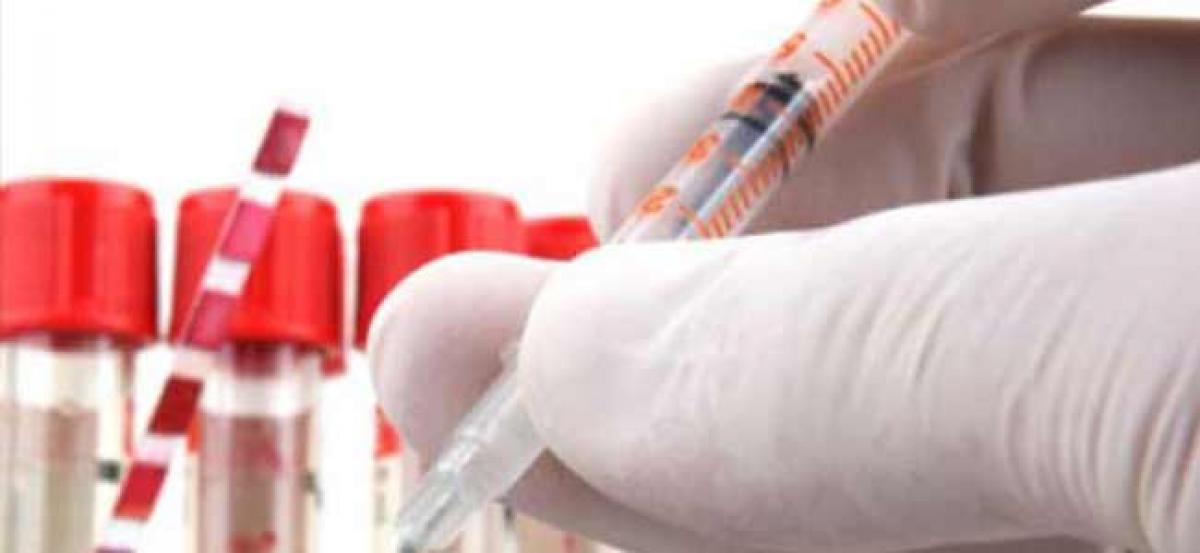Live
- AR Rahman’s ‘Aadujeevitham’ Music Nominated Twice at 2024 Hollywood Awards
- NBK’s action drama ‘Daaku Maharaaj’ unveiled with power-packed teaser
- Nehru’s services unforgettable : Veerlapalli
- ROB ready by March-end
- 30.1-9-49-10 – Anshul Kamboj picks up all 10 wickets in Haryana vs Kerala Ranji Trophy match
- South Korean FM Cho, Blinken hold talks on margins of APEC summit in Peru
- India’s insurance sector growth surpasses China, Thailand: McKinsey
- CLOSE-IN: Indian cricketers from Paupers to Princelings
- Delhi-NCR's air quality remains hazardous for residents
- South Korea, US, Japan to announce establishment of trilateral secretariat this week
Just In

Scientists have developed a nanowire device that can detect microscopic levels of cancer markers in the urine, an advance that could help non-invasively diagnose the deadly disease.
Scientists have developed a nanowire device that can detect microscopic levels of cancer markers in the urine, an advance that could help non-invasively diagnose the deadly disease.
Cells communicate with each other through a number of different mechanisms.
A less familiar mode of cellular transport is the extracellular vesicle (EV), which can be thought of as small "chunks" of a cell that are able to pinch off and circulate throughout the body to deliver messenger cargo to other cells.
These messengers have become increasingly recognised as crucial mediators of cell-to-cell communication.
Researchers have developed a novel medical device that can efficiently capture these EVs, and potentially use them to screen for cancer.
"EVs are potentially useful as clinical markers. The composition of the molecules contained in an EV may provide a diagnostic signature for certain diseases," said Takao Yasui, from Nagoya University in Japan.
"The ongoing challenge for physicians in any field is to find a non-invasive diagnostic tool that allows them to monitor their patients on a regular basis - for example, a simple urine test," said Yasui.
Among the many molecules EVs have been found to harbor are microRNAs, which are short pieces of ribonucleic acid that play diverse roles in normal cellular biology.
Critically, the presence of certain microRNAs in urine might serve as a red flag for serious conditions such as bladder and prostate cancer.
While this important cargo could therefore theoretically aid physicians in cancer diagnoses, there are still many technological hurdles that need to be overcome.
One such hurdle: finding a feasible method to capture EVs in sufficient quantities to analyze them in a routine clinical setting.
"The content of EVs in urine is extremely low, at less than 0.01 per cent of the total fluid volume. This is a major barrier to their diagnostic utility," Yasui said.
"Our solution was to embed zinc oxide nanowires into a specialized polymer to create a material that we believed would be highly efficient at capturing these vesicles," he said.
"Our findings suggest that the device is indeed quite efficient. We obtained a collection rate of over 99 per cent, surpassing ultracentrifugation as well as other methods that are currently being used in the field," he added.
To test the practicality of their device, researchers compared the microRNAs of EVs isolated from healthy patients with those isolated from patients who were already diagnosed with bladder, prostate, and other forms of cancer.
The technique required only one millilitre of urine and found a substantially greater number and different types of microRNAs compared with the standard ultracentrifugation approach.

© 2024 Hyderabad Media House Limited/The Hans India. All rights reserved. Powered by hocalwire.com







